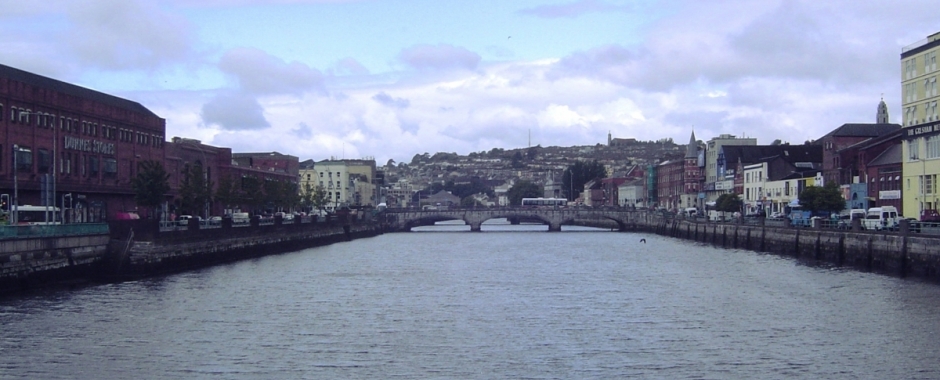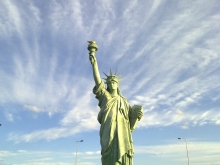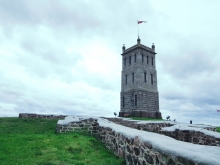
Whenever you visit Ireland you hear the local people say "Céad míle fáilte" in Irish which means "100,000 Welcomes." Let's start with the welcome drink of Ireland:
"Guinness Draught" is the famous black Irish beer and even though an irish man in a pub told us that "only tourists drink it" and that "the locals drink other kinds of beers", it nevertheless fits to Dublin. The name of Dublin city comes from the word "Dubhlinn" - "Dubh" = black and "Lind" = pool, so together they mean "The black pool." As usual we prefer it to be different, we called it "the Dark lord's pool." When you drink the beer, you will discover something. Oh, my lord, it is a golden harp! To be a lord, you must be rich and noble. The bigger version of the golden harp appears on the Charles Stewart Parnell monument:
The statue of the leader of Irish nationalist politician who held the balance of power in the House of Commons during the Home Rule debates of 1885–1890. The golden harp was the coat of arms of Ireland - the national emblem. It is called "The Brian Boru's harp". As it is displayed at Trinity College Dublin, so it is also called "Trinity College Harp." Off we go and visit Trinity college after the drink:
It is the oldest university in Dublin. Another item on display in public in the Old Library at Trinity since the 19th century, "The Book of Kells", written by Kells Abbey. It is unknown how the book survived after Viking raids in the 10th century. It is told that the book was stolen during the night from the western sacristy of the great stone church at Cenannas, allegedly due to its wrought shrine. The manuscript was found a few months later, of course without jewellery on the golden cover.
The neo-Gothic Victorian building is called Graduates Memorial Building (GMB), designed by Sir Thomas Drew in 1897. It is for Trinity College's oldest student societies: the University Philosophical Society (the Phil), the College Historical Society (the Hist) and the College Theological Society (the Theo).
The landmark is this remarkable bell tower, the Campanile of Trinity College Dublin, sculpted by Thomas Kirk and finished in 1853:
Mellows bridge :
The oldest bridge in Dublin with its history. It is named after the Lieutenant General Liam Mellows of the Irish Republican army who was executed during the Irish Civil War instead of the former name, Queens Bridge, which named after Charlotte of Mecklenburg - the queen consort of George III - King of the Great Britain and Ireland.
Next, a war memorial called "Fusiliers Arch" :
According to history, it is a war memorial of the soldiers under the Royal Dublin Fusiliers who fought and died in the Second Boer War (1899–1902). Their names encraved under the arch when you walk through the Fusiliers Arch. The next monument is "Spire of Dublin" or Monument of Light at Henry street :
"An Túr Solais" in irish or the Monument of Light is a large stainless steel sky needle with a height of 120 metres, located on the site of the former Nelson's Pillar on O'Connell Street in Dublin which was destroyed by a bomb in 1966 after the guerrilla war against British rule in the Irish War of Independence between 1919 and 1921. So many war stories in a day, let's find some peace in the the National Cathedral of the Church of Ireland:
Saint Patrick’s Cathedral is founded in 1191, the largest Christian Church Cathedral of Ireland with the height of 43 metres. The interior of the cathedral looks like this:
Finally, Dublin castle :
Nowadays, It is the Irish government complex and conference centre. It belonged to the first Lord of Ireland - King John. As the lord of Ireland was also the king of England, the castle served as the seat of English and later British government of Ireland under the Lordship of Ireland or as they called it "Norman Ireland" which was the part of Ireland ruled by the King of England and controlled by loyal Anglo-Norman lords between 1177 and 1542.
Well, there must have been pool parties of the dark lord in this castle.
Please, let there be light in there!














